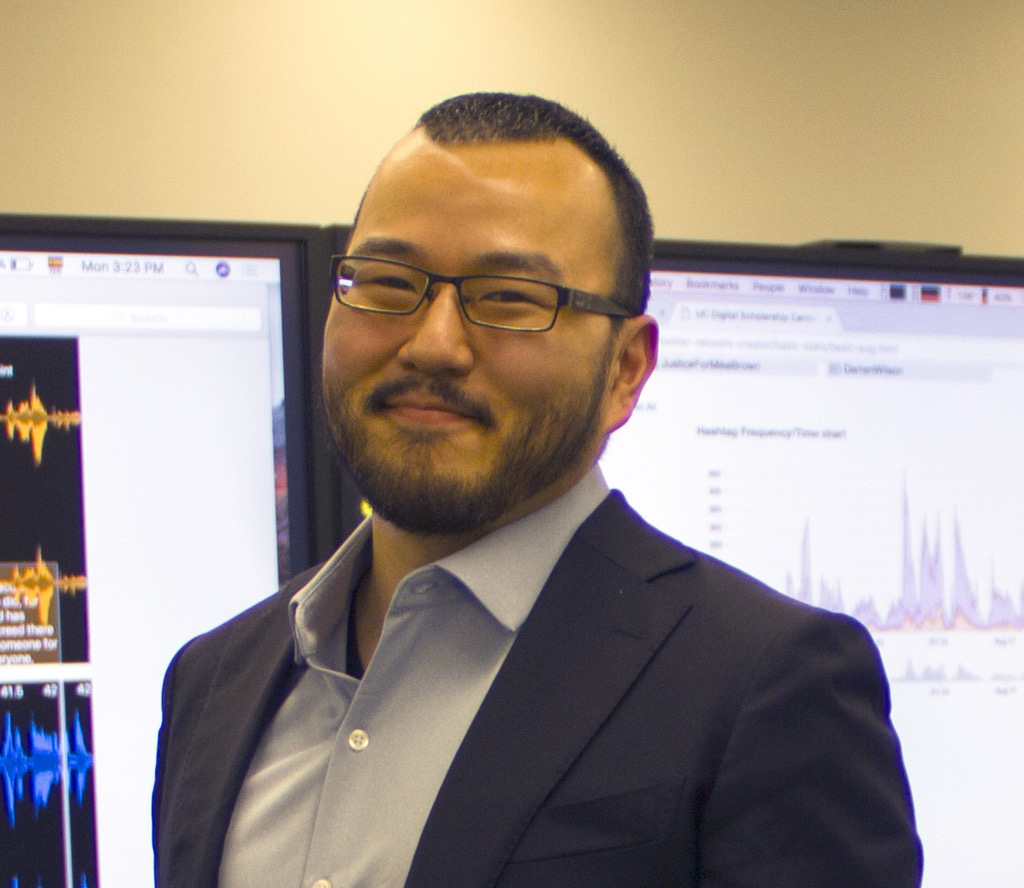Projects
Twitter Social Justice Movement Network Analysis
OVERVIEW
We are working with the journalism program in the College of Arts and Sciences, the College of Law, and the College of Design, Architecture, Art, and Planning on a “big data” analysis of #BlackLivesMatter on social media at the local and global scales. Previous research has detailed how social justice movements have effectively engaged social media in general, and Twitter in particular, to provide counter narratives to legacy news media, and to intensify public debate and criticism about law enforcement. Our faculty collaborators are interested in evaluating: (1) the most used and impactful hashtags in the immediate aftermath of the Michael Brown shooting in Ferguson, and (2) change over time by analyzing triggering events where the hashtags (invoked during the immediate aftermath of the shooting) might spike again, including legal decisions like Darren Wilson’s non-indictment.
To perform this research, we have extracted every tweet from across the globe written in the four months after the Michael Brown shooting from the Twitter historical archive related to #BLM, and created a network showing which users and regions responded to one another during that intense period. Additionally, we are developing machine learning algorithms to parse the semantic discourse of the entire Twitter archive. We aim to test the accuracy of the adage that “all politics are local” by comparing our faculty expertise with #BLM and social justice movements in the context of their own disciplines, with the macro-level picture that emerges from the social network analysis and semantic discourse of the 48 million tweets that define the social movement globally.
Our tests are prompting us to question our understanding of social movements and political action. For example, do the network visualizations look like a “social movement” as they are conventionally defined in terms of strikes, protest marches, or sit-ins? How do the visualizations of the Twitter movements reshape our understanding of how political action takes place in the digital era? We have used network analysis techniques to track how social justice hashtags attain a “viral” status, and have found that factual and descriptive hashtags, including proper names like #MikeBrown and place names like #Ferguson are the first wave of hashtags that become viral. More conceptual and ideological markers, like #BLM, register only faint activity in the immediate aftermath of the Michael Brown shooting. But after one to two weeks, they dominate the discourse and capture more media attention. We are also examining change in the hashtag behavior over time by analyzing triggering events where the hashtags register large increases in activity, including legal decisions like Darren Wilson’s non-indictment, and the death of Eric Garner.
- Social Network Analysis
Publications & Presentations
Research & Data Services

The UCL Research Data Services group inspires the creation of knowledge and enhances research productivity across the UC research community through the development and implementation of interdisciplinary research data services that enables research and promotes synergistic collaborations between UCL and UC researchers.
For more information: Research & Data Services




